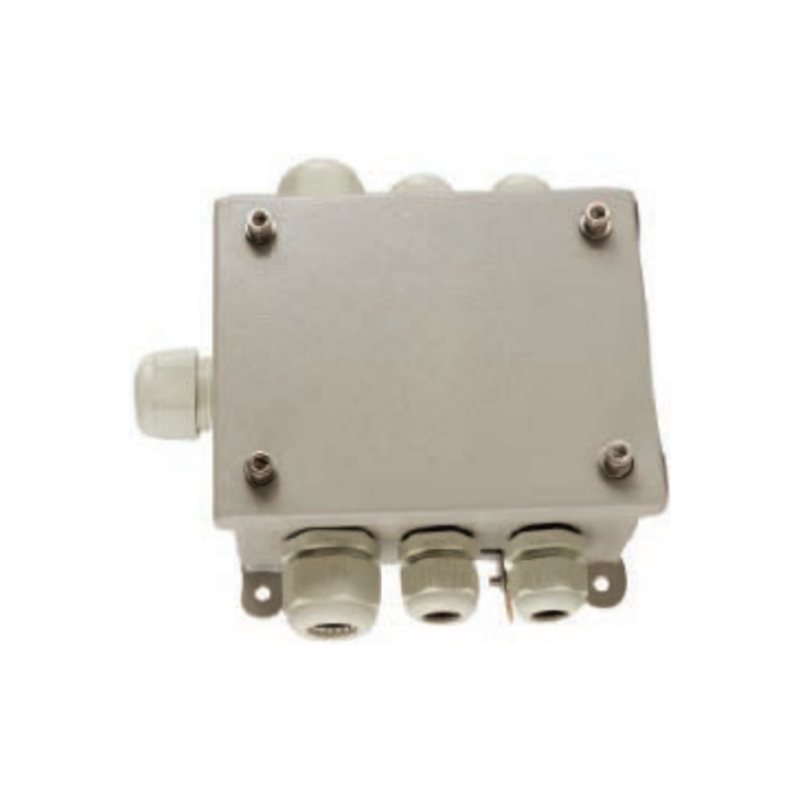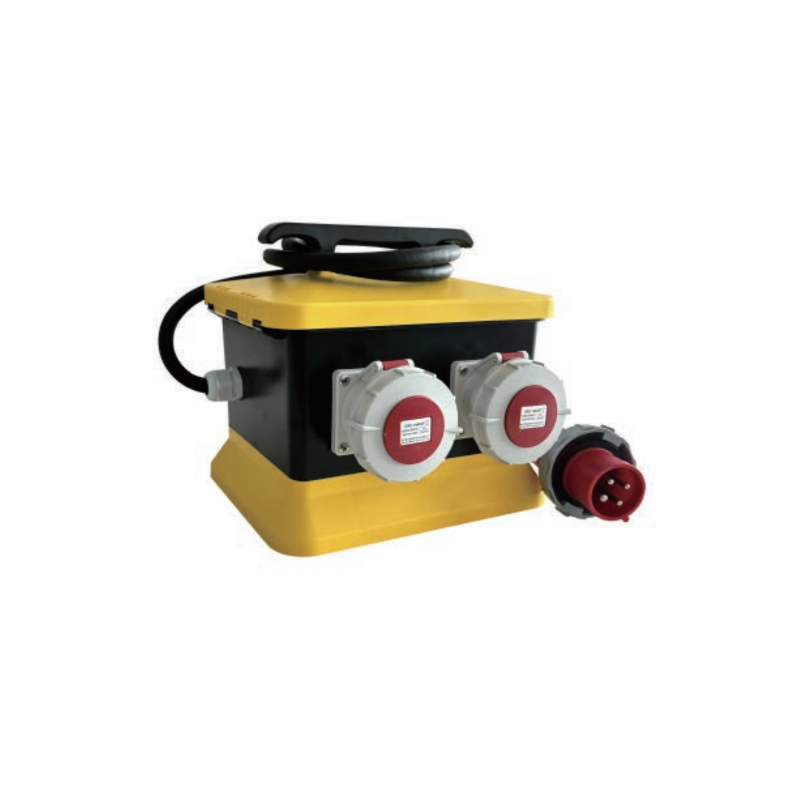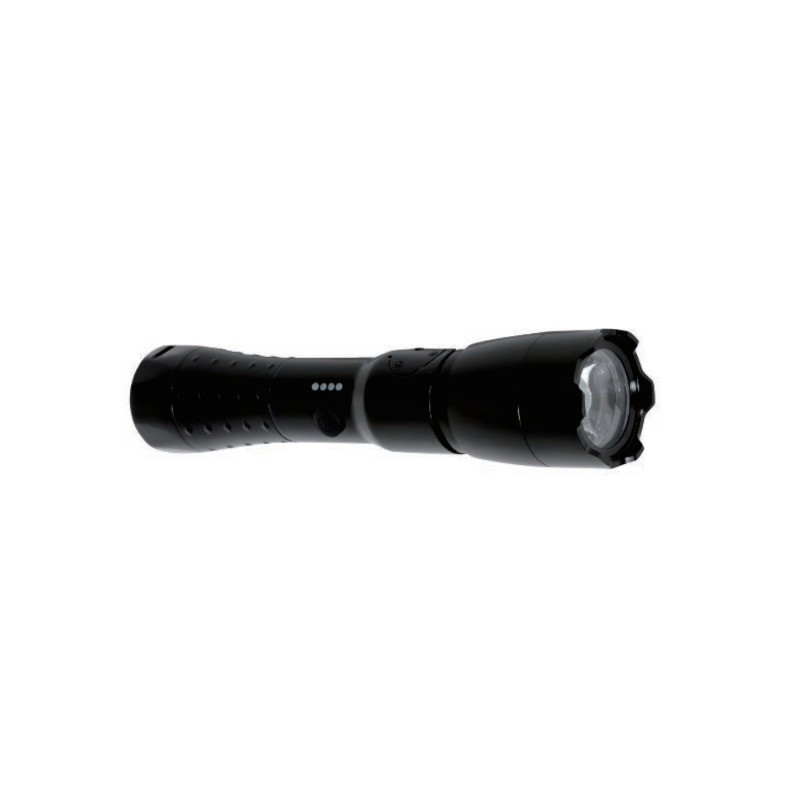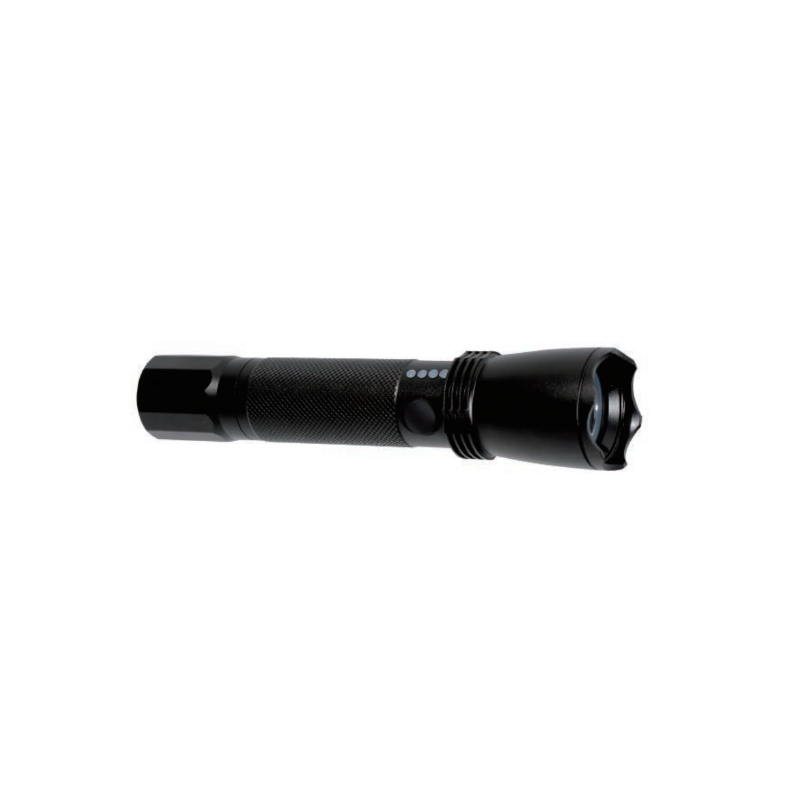Safety lighting is vital in many industrial sites, as well as in certain marine environments. In these environments, there are potentially explosive gases and dusts that, once triggered by sparks or high temperatures, may cause serious accidents or even explosions. In order to deal with these potential dangers, explosion-proof lights, as a specially designed lighting equipment, play a vital role. Explosion-proof lights can not only provide necessary lighting, but also effectively prevent sparks or high temperatures from igniting surrounding flammable gases, thereby reducing the possibility of accidents. They can prevent any sparks or high temperatures generated inside from igniting surrounding flammable materials, ensuring the use Environmental safety.

Basic concepts of marine explosion-proof lights
Explosion-proof: Marine explosion-proof lights are designed with the ability to prevent any sparks or high temperatures inside the light from reaching the outside and igniting surrounding flammable gases or dust.
Sealing performance: High-quality sealing performance is one of the basic requirements for marine explosion-proof lamps to prevent flammable gases or steam from entering the interior of the lamp body.
Corrosion resistance: Due to the corrosive nature of the marine environment, marine explosion-proof lights are usually made of corrosion-resistant materials, such as stainless steel or special alloys.
Safety certification: Marine explosion-proof lights need to pass specific safety certification to prove that they can be used safely in specific hazardous environments.
The importance and application background of marine explosion-proof lights
Safety: In environments such as tankers, oil platforms and chemical carriers, preventing fires and explosions is critical. Marine explosion-proof lights provide necessary light while keeping these environments safe by preventing ignition of surrounding flammable materials.
Regulatory Compliance: Many national and international agencies have clear safety standards and regulations for electrical equipment used in flammable and explosive environments. The use of marine explosion-proof lights that comply with standards is necessary to comply with these regulations.
Operational Continuity: In extreme or hazardous work environments, maintaining operational continuity is critical to business success. Marine explosion-proof lights ensure stable lighting even in the toughest conditions, reducing unplanned interruptions.
Environmental adaptability: Marine explosion-proof lights are designed to withstand the harsh conditions of the marine environment, including salt spray, moisture and temperature changes, ensuring long-term reliable operation.
Working principle of marine explosion-proof lights
Design features of marine explosion-proof lights
(1) Strong shell: Marine explosion-proof lights usually use strong shell materials, such as aluminum alloy or stainless steel. These materials can withstand high pressure and impact, preventing internal components from being damaged, thereby avoiding sparks or heat leakage.
(2) Increased safety design: This design ensures that even if the lamp fails internally, the sparks or high temperatures generated will not be transmitted to the external environment. This is achieved through the use of special structures and materials, such as the use of flameproof barriers and thermal insulation.
(3) Sealing performance: Marine explosion-proof lamps have excellent sealing performance to prevent external flammable gases or steam from penetrating into the interior of the lamp body. This can be achieved by using seals such as sealing rings and gaskets.
(4) Corrosion resistance and waterproofing: Considering the particularity of the marine environment, corrosion-resistant materials are used in the design of marine explosion-proof lights and have good waterproof performance to ensure stable operation in harsh environments.
(5) Low-temperature surface: The design also takes into account surface temperature control to ensure that the surface temperature of the lamp body is lower than the auto-ignition temperature of surrounding flammable substances, thereby reducing the risk of explosion.

How to prevent explosions caused by sparks and heat in marine explosion-proof lights
(1) Explosion-proof structure: The explosion-proof structure limits the internal explosion from leaking to the external environment. Even if an internal explosion occurs, it will not ignite external flammable gases or dust.
(2) Internal space design: Design the interior space of the lamp to minimize the possibility of sparks or heat generation, including using special wiring and component layout to reduce the risk of failure.
(3) Temperature control: Use heat dissipation technology and materials, such as heat pipe technology or special heat dissipation design, to keep the external surface temperature of the lamp within a safe range and prevent ignition of surrounding flammable substances.
(4) Electrical safety design: including the use of low voltage and low current design, and adding safety devices (such as short circuit protection, overload protection, etc.) to the circuit to reduce the probability of failure.
Application scenarios of marine explosion-proof lights
Petrochemical industry
- Tankers and Oil Platforms: When handling, transporting and storing flammable and explosive chemicals, it is critical to prevent any sparks that could cause an explosion. Marine explosion-proof lights provide safe lighting in these environments, reducing the risk of accidents.
- Refinery: A large amount of flammable gases are released during the oil refining process. Marine explosion-proof lights are used to ensure safe lighting of the operating area and prevent fires or explosions caused by electrical equipment.
Mining industry
- Underground mines: In underground mines, there are flammable and explosive substances such as gas and coal dust. Marine explosion-proof lights provide necessary light while ensuring safety and avoiding gas explosions.
- Mining site: In open-pit mines or other mining sites, although open, explosion-proof lighting is still needed to ensure safe operations at night or in low-light conditions.
Dust environment
- Grain silos: Grain dust is highly explosive at certain concentrations. The use of marine explosion-proof lights can effectively prevent electrical sparks from igniting dust and protect the safety of storage facilities.
- Textile mills: Textile production processes produce fine fiber dust that may form explosive mixtures in the air. Marine explosion-proof lights provide safe lighting in such environments and reduce the risk of fire.
Other potentially hazardous environments
- Pharmaceutical plants: During the pharmaceutical process, certain chemical reactions may produce flammable gases or vapors. Marine explosion-proof lights ensure safe operations in these areas and prevent accidental fires or explosions caused by chemical reactions.
- Chemistry Laboratory: A variety of chemicals are used in laboratories that may produce flammable gases or potentially hazardous chemical reactions. The use of marine explosion-proof lights in these places can increase safety and prevent accidents caused by electrical equipment.
Benefits of installing marine explosion-proof lights
Improve workplace safety
- Prevent Spark-Induced Explosions: Marine explosion-proof lights are designed to significantly improve workplace safety by preventing internal sparks or high temperatures from contacting external flammable environments.
- Adaptable to harsh environments: These lamps can withstand harsh working environments, such as high humidity, high temperature, and salt spray, ensuring reliable lighting under various conditions.
Comply with safety regulations and standards
- Meet international safety standards: Marine explosion-proof lights comply with international safety standards, such as ATEX or IECEx. Installing these lamps helps companies comply with relevant safety regulations and avoid legal issues and fines.
- Prove corporate responsibility: Using certified explosion-proof lighting equipment demonstrates the company’s emphasis on safety and commitment to employee well-being, helping to establish a good corporate image.
Reduce the risk of accidents
- Reduce potential hazards: By preventing possible explosions caused by sparks or heat, marine explosion-proof lights reduce the chance of accidents in the workplace.
- Mitigating the consequences: Even if an accident occurs in extreme circumstances, the design of explosion-proof lighting can limit the scope of the accident, thereby reducing potential losses.
Protect employees’ lives and property safety
- Provide safety lighting: Ensure there is enough light in the work area to reduce accidents caused by poor visibility and ensure the safety of employees during daily operations or emergencies.
- Reduce economic losses: By preventing major accidents, companies can avoid the economic losses of high compensation, equipment damage and production stagnation caused by explosions.
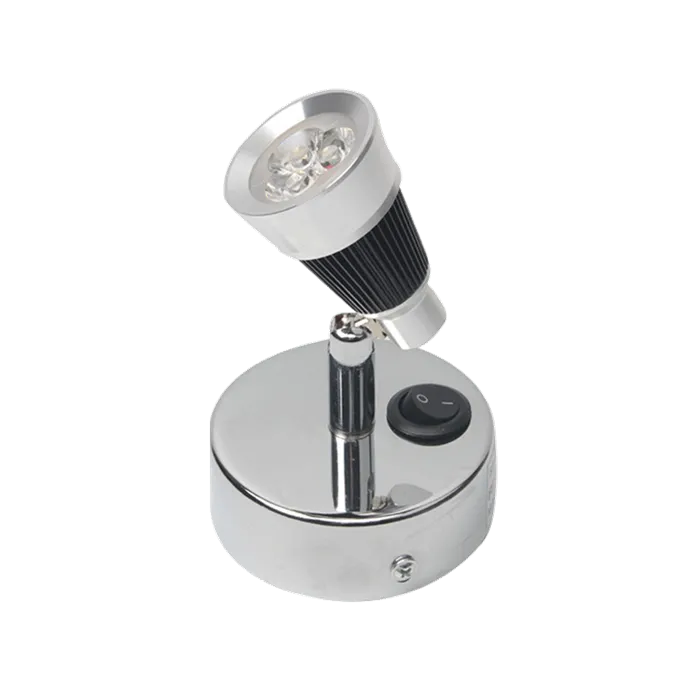
Key points for selection and installation of marine explosion-proof lights
Choose the appropriate explosion-proof level according to the environment
- Understand the environmental characteristics: First, the required level of explosion protection needs to be determined based on the type and characteristics of flammable and explosive substances (such as gas, steam or dust) present in the working environment.
- Comply with standards: Choose luminaires that comply with international explosion protection standards (such as ATEX or IECEx) and ensure that they are suitable for specific zone classifications (such as Zone 1, Zone 2 for gas environments, Zone 21, Zone 22 for dust environments).
Consider the lighting range and brightness requirements of the lamp
- Lighting range and brightness: Choose the appropriate lighting range and brightness according to the size of the work area and job requirements. You need to ensure that the light fixtures provide enough light to clearly see the work area and safe passages.
- Type of light source: Consider LED light sources as they offer longer life, lower energy consumption, and perform better in low temperature conditions.
Consideration of installation location and height
- Adequately illuminate critical areas: Ensure fixtures are installed in a location that adequately illuminates work areas and critical equipment.
- Avoid glare and shadows: When installing, consider avoiding glare or shadows, which may affect employee visibility and productivity.
- Consider Maintenance and Replacement: Choose a mounting location that is easily accessible to facilitate maintenance and replacement of the fixture.
Maintenance and inspection of marine explosion-proof lights
- Regular inspections: Regular inspections of marine explosion-proof lights include checking the integrity of the housing, sealing performance and electrical connections.
- Cleaning and Maintenance: Clean the fixture regularly to remove dust and other debris that may affect the performance of the fixture. Ensure that the heat dissipation performance of the lamp is not affected.
- Replacement and Repair: Follow the manufacturer’s instructions for lamp replacement and repair. Use original accessories and parts to maintain the explosion-proof performance of the lamp.
Maintenance and maintenance of marine explosion-proof lights
(1) Regularly check the sealing ring: Regularly check the sealing ring and other sealing parts of the lamp. Once signs of damage or aging are found, they should be replaced immediately to maintain good sealing performance.
(2) Clean lamps: Clean the casing and light-transmitting parts of the lamp regularly to remove dust, dirt and salt to prevent light output from being blocked and the casing corroded. Use a soft cloth and a mild cleaner, and avoid using rough materials or harsh cleaners that may damage the fixture’s surface.
(3) Check and replace the light source: For traditional light sources, replace the bulb periodically according to the instruction manual or the manufacturer’s recommendations to ensure brightness. For LED lamps, although they have a longer lifespan, their performance should be checked regularly and replaced if necessary.
(4) Check the electrical connections: Check the electrical connections of the lamp regularly to ensure that all connections are tight and free of corrosion. Any damaged wires or components should be replaced or repaired by a professional.
(5) Avoid operations by non-professionals: Maintenance and replacement work should be performed by professional technicians, and non-professionals should be prevented from disassembling lamps to prevent damage to the explosion-proof structure.
(6) Use original accessories: When replacing any parts, including seals, bulbs, etc., original accessories should be used to maintain the explosion-proof performance and safety of the lamp.
Frequently asked questions about marine explosion-proof lights
1.Decreased sealing performance: Long-term exposure to harsh environments may cause the sealing ring to age, weaken the sealing performance of the lamp, and increase the risk of internal moisture or flammable gas intrusion.
2.The brightness of the light source decreases: The brightness of the LED light source will gradually decrease after the bulb ages or the LED light source is used for a long time.
3.Shell corrosion: Especially in the marine environment, factors such as salt and moisture will accelerate the corrosion process of the shell.
4.Electrical connection problems: Vibration, temperature changes, and humidity can cause electrical connections to become loose or corroded.

FAQ
Q: Why can marine explosion-proof lights be used in flammable and explosive environments?
A: Marine explosion-proof lights are specially designed to prevent sparks or high temperatures generated inside from being transmitted to the surrounding flammable environment. They achieve this through a robust housing, special sealing technology and an explosion-proof design, ensuring safe use even in hazardous environments.
Q: What does the explosion-proof grade of marine explosion-proof lights mean?
A: The explosion-proof level refers to the standard in which environment marine explosion-proof lights can be used safely. These classes are based on the maximum explosion pressure that the luminaire can withstand, the types of flammable substances that may be present in the work environment, and the presence of gases or dusts. Common grades include Zone 0, Zone 1, Zone 2 (for gas environments) and Zone 20, Zone 21, and Zone 22 (for dust environments).
Q: How to choose a suitable marine explosion-proof light?
A: The following factors should be considered when selecting: the specific explosion-proof level of the area, lighting requirements (brightness, irradiation range), installation environment (such as indoor and outdoor, humidity, temperature), material requirements (corrosion resistance), etc. Make sure the fixtures you choose meet the safety standards and lighting needs of your specific environment.
Q: What should you do if your marine explosion-proof light fails?
A: If the lamp fails, the power supply should be cut off first to prevent safety accidents. Then contact a professional technician for inspection and repair. It is not recommended that non-professionals try to dismantle or repair the lamp to avoid damaging its explosion-proof performance.
Q: Can marine explosion-proof lights be used in any environment?
A: No. Although marine explosion-proof lamps are designed for use in flammable and explosive environments, each lamp has its own specific explosion-proof level and applicable environment. When selecting, lamps of the corresponding grade must be selected according to the characteristics of the actual working environment to ensure safety.


